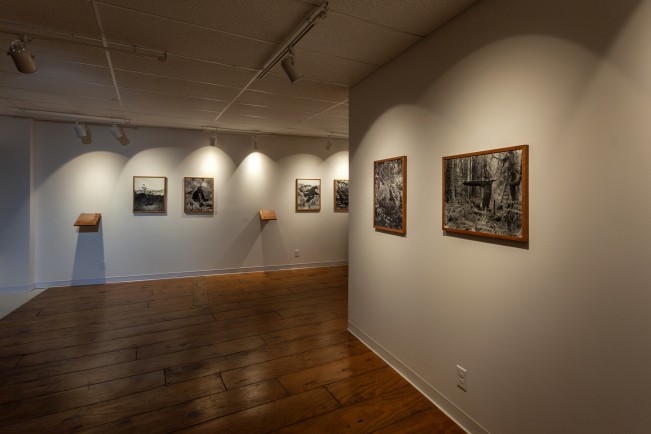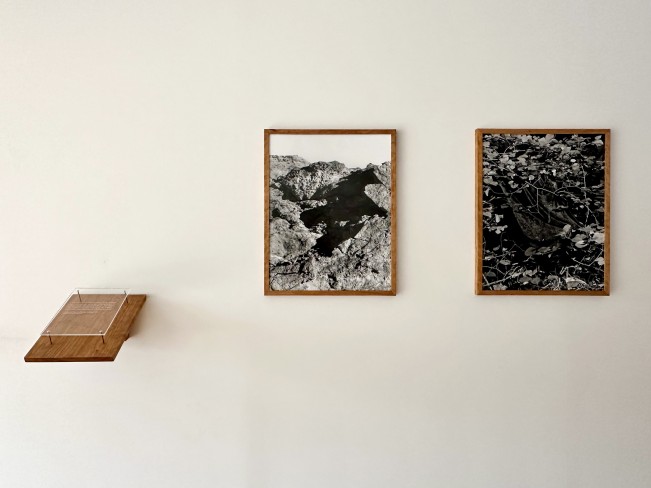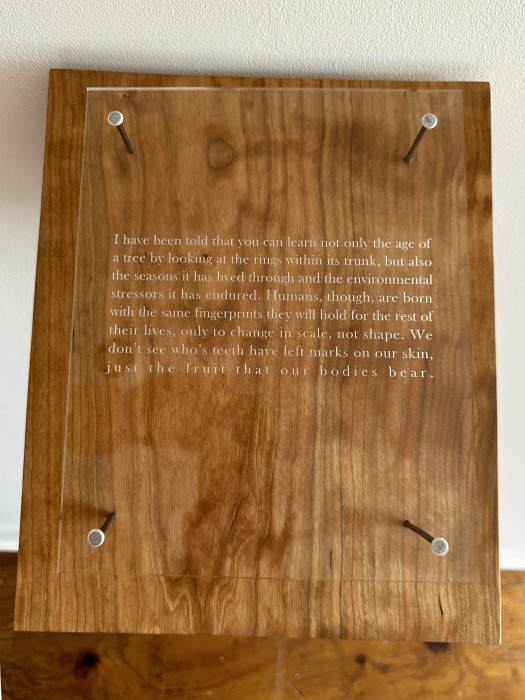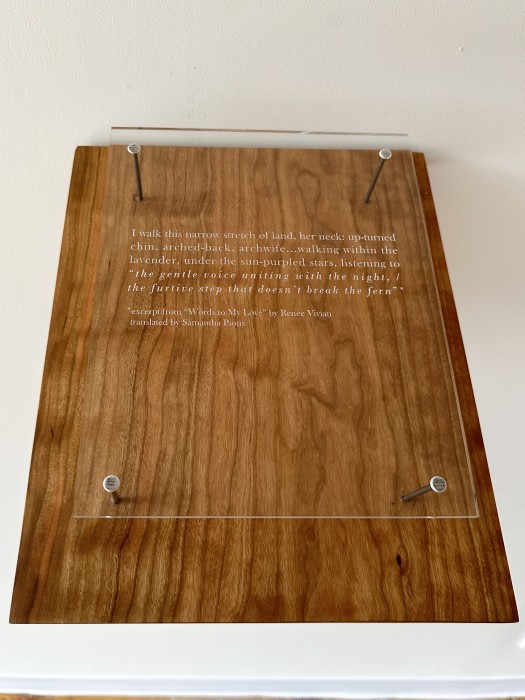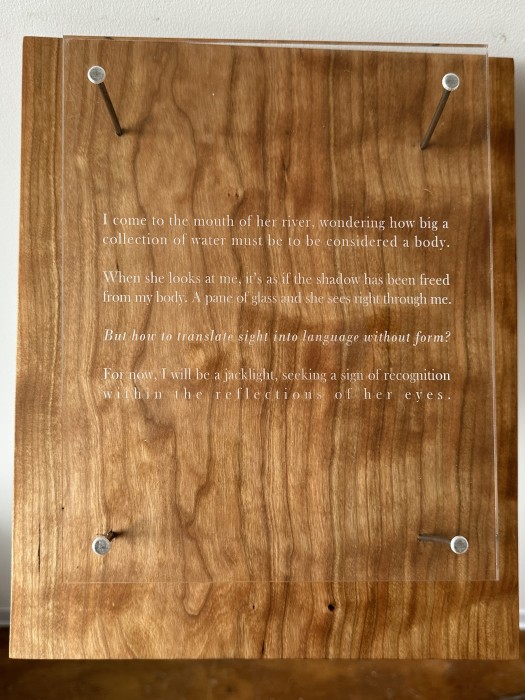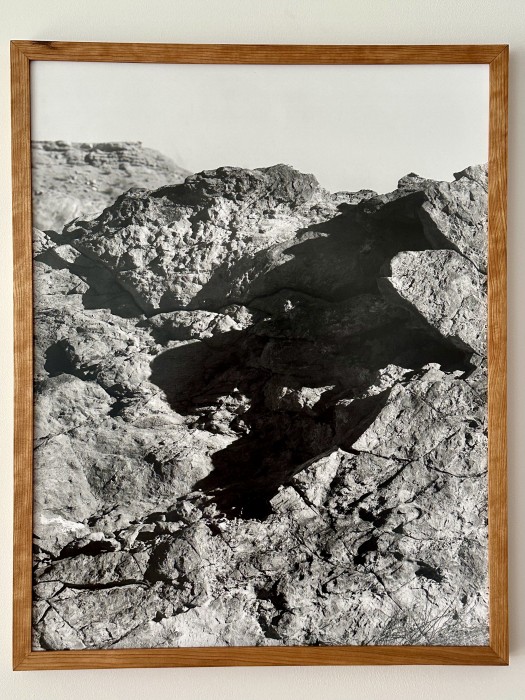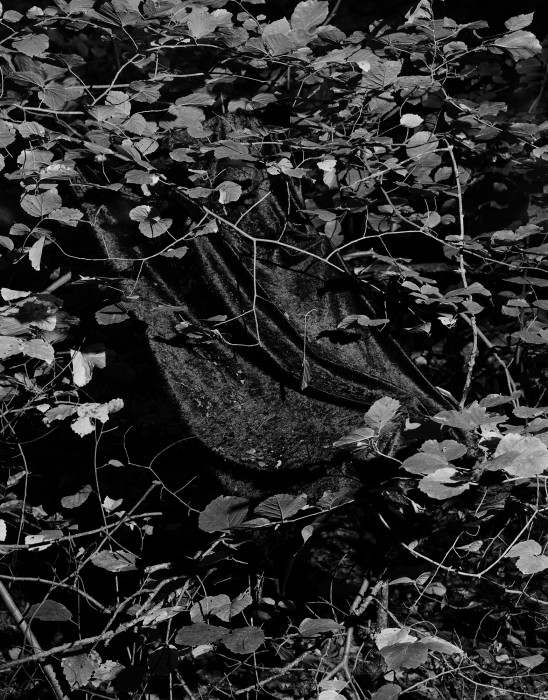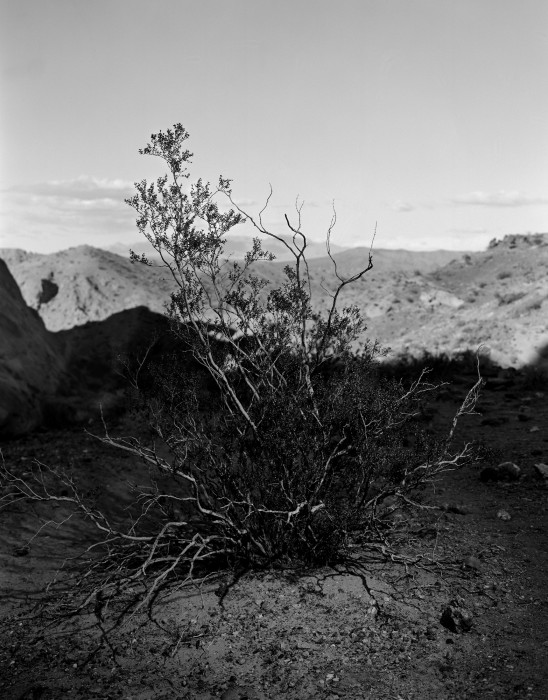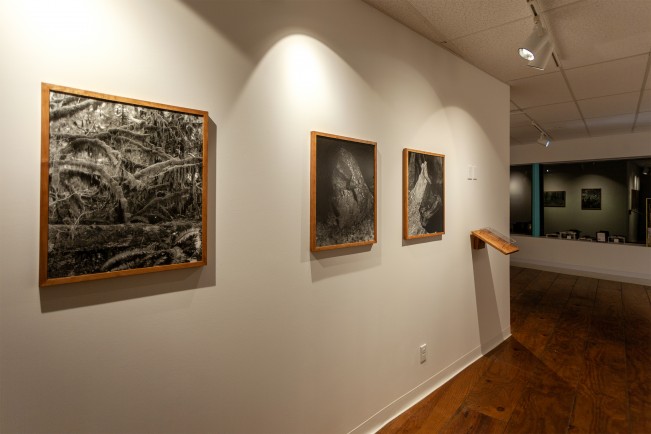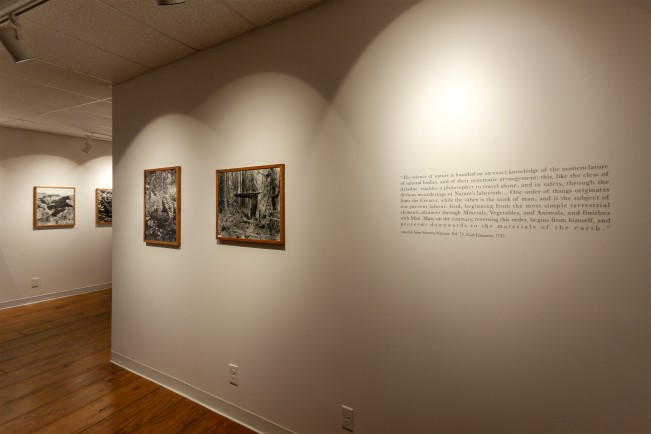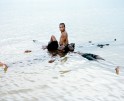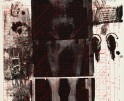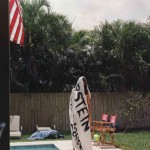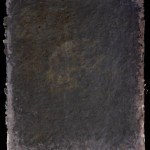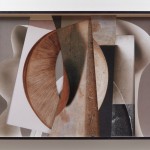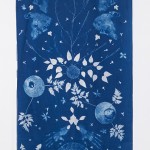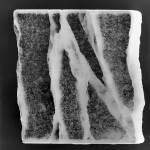“notes from a body inverted” by Emme Rovins – Exhibition at Gravedigger’s Daughter
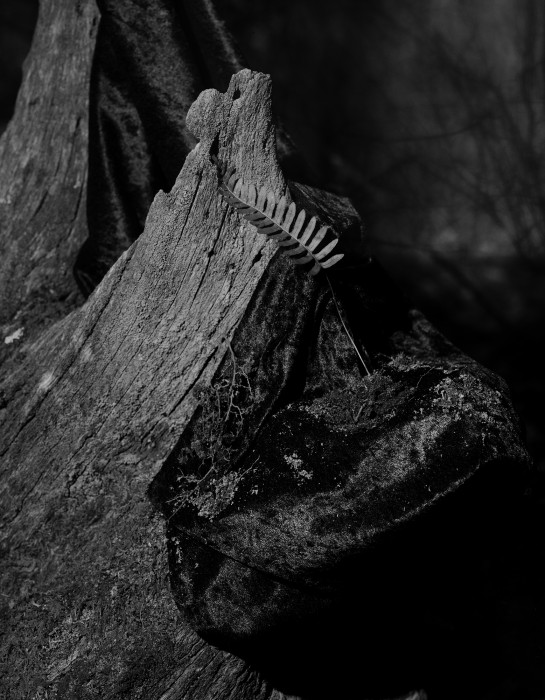
© Emme Rovins
Modern day modes of botanical taxonomy are still based on a system that focused attention on the organs of generation within plants, “unleash[ing] onto the public imagination the idea that plant reproduction was analogous to human sexuality”.¹ These human-plant analogies resulted in a reliance on corporeal language to describe the fructification of plant species, blurring the lines between the culture of botany and the cultivation of, mostly female, “bodies”.
Contextualized within this sexualization of Linnaean botany, “notes from a body inverted” analyzes the slippages between personification and historical scientific observation in order to investigate lesbian historiographies and the creation of fraught sexualities. Despite the cycle of relentless contingency placed between the body and language, these photographs, subverting the visual language of traditional botanical illustration, decentralize the human form to suggest an alternative depiction of a contemporary queer identity, and question what form desire takes if not translated from the body.
– Artist Statement, Emme Rovins, “notes from a body inverted”
“notes from a body inverted” was an introspective exhibition at Gravedigger’s Daughter, featuring a collection of black and white, large-format, photographs, and writing by artist, Emme Rovins.
Located in Waldoboro, Maine, the gallery was home to the exhibition this past September and was the first solo exhibition by Maine-based photographer, Emme Rovins. The work explores her reverence for the natural world and the navigation of her sexuality and identity, culminating in an incredible installation of text and image.
Aside from presenting a strong showcase of evocative, beautiful photographs, the printing and framing elevate the work further. Each print was meticulously printed in the darkroom, and all aspects of the installation were handmade. Rovins built each frame and etched each piece of glass, and the quality of those alone is incredible. However, it’s the pairing of text and image which makes the installation stand out and feel quite special.
In a gallery setting, it’s often a struggle to include text. More often than not, it detracts from the images and can be difficult to pair together in a three-dimensional space. However, in this exhibition, it’s masterfully done and both mediums feel cohesive.
Rovins navigates her imagery by splitting it into runs of two to three photographs, broken up by writing, engraved into glass mounted to wood. The decision to opt to include text through this type of installation is genius. It mirrors the central theme and ideas of the exhibition, and the materials Rovins used for building the frames are used universally, creating a strong level of cohesion conceptually and visually.
The combination of text and image also lends itself to the work’s poetic navigation of themes and ideas. Each silver gelatin print is lush with detail and holds such a deep tonal range. The images depict the land and capture the natural world in a way that humanizes it, drawing comparisons to portraiture. Furthermore, the care that went into the production of each print and frame lends itself to the tenderness we often associate with photographs of people. Every aspect of the installation feels organic, and from the earth, which pairs beautifully with the featured text.
Focusing on the images, there’s a consistent juxtaposition of light and dark; spots of photographs, the foreground, or the background are often immersed in a cloak of darkness. Tonally they’re soft, and delicate, feeling like an invitation to enter the world created by Rovins. However, many of the images also depict sharp or rough textures. The photographs feel alive and incredibly descriptive of the land, as if they’re portals. This combination of soft, inviting tones, and the documentation of life sprouting in both violent and peaceful ways, adds layers of depth to the photographs. It’s easy to get lost in them, immersed in the detailed, lush environments, in each individual image.
Alongside the visually beautiful imagery, the conceptual side of the work is dense in meaning and amplified by the inclusion of text. Not only is the text present, but it’s a part of the sequence. Commonly, exhibitions will include an artist statement, but in a way that separates it from the installation. It can often either be found as vinyl, at the beginning or end of the sequence, in a binder off to the side, by scanning a QR code, etc.
What separates this exhibition, is that it almost feels more akin to a book’s sequence. The spacing of photographs, wall breaks, and the inclusion of text engraved in glass, installed on the wall alongside the framed photographs, feel like a book. I mean that in an incredibly complimentary way, I think it’s such a difficult negotiation in designing a layout and installation. To “feel like a book,” in the sense of seamless page turns, and navigation between mediums, is an incredible feat.
As a result, “notes from a body inverted” is an engaging exhibition that explores the nuances of botany, feminity, and sexuality through a thought-provoking and immersive installation.
Emme Rovins (b. 1997, Southern New Jersey) is a photographer currently based in Kennebunk, Maine. Rovins’s reverence for the natural world alongside her progressively intricate understanding of the relationship between sexuality and identity culminates in her photographic practice. Weaving aspects of the landscape into visual metaphors, Rovins negotiates her relationship to the land in order to gain a deeper understanding of her own sexuality. She considers the lineage of landscape photography throughout the history of the medium, particularly due to its male domination, as she ritualizes the act of a woman exploring the woods under the cover of darkness.
Follow Emme Rovins:
Gravedigger’s Daughter opened in 2021 and is a contemporary art space located in Waldoboro, Maine. Gravedigger’s Daughter presents art that helps us understand each other and the world through the lens of emerging and established artists. We believe the arts are essential to a healthy rural community and economy. Currently, the gallery is open from Memorial Day to Veteran’s Day and features 6-10 artists each season.
Gravedigger’s Daughter is owned by Jen Barrows and Brendan McGuirl and is operated by Barrows. Her father, Ralph, was a Gravedigger.
Gravedigger’s Daughter is a harbor for what is lost but not gone. We stand in the space between memory and soil, between the breath held and the exhale. Here, the land speaks—through weathered liminality, through the quiet ache of forgotten towns, through the sky’s endless arc. The gallery exists as an offering: a place to gather the fragments of what was, and what could be, stitching them into something that holds space for both grief and wild, pulsing life.
The works we present are moments suspended in amber—each one a call to pause, to look again. What does it mean to belong? What does it mean to remember? And in the end, what do we owe the land that has carried us and the people who shape us?
Gravedigger’s Daughter is a place where the personal and the collective blur, where you are invited to step into the gap between the past and the future and linger, if only for a moment, in the soft unraveling.
Follow Gravedigger’s Daughter:
Jake Benzinger (he/him) is a photographer, book artist, and writer based in Rockland, Maine; he received his BFA in photography from Lesley University, College of Art and Design in Cambridge, MA. His work explores self-created mythos, and through the dislocation of space, he weaves together imagery to construct a world that exists in the liminal—navigating the space between fiction and reality and investigating themes of identity, mysticism, animism, and death.
His work has recently been featured by Float Magazine, Transference Magazine, and Fraction Magazine, and has been exhibited both nationally and internationally. Jake’s body of work, Like Dust Settling in a Dim-Lit Room (Or Starless Forest), was self-published, shortlisted for the 2023 Lucie Photo Book Prize, and sold out of its first edition of hardcover books. A second edition was released in late 2023, coinciding with a solo show at the Griffin Museum of Photography.
Jake is currently the assistant gallery manager, associate curator of photography, and curator of books at Blue Raven Gallery, a content editor for Lenscratch, and the founder/director of wych elm press.
Follow Jake Benzinger:
Posts on Lenscratch may not be reproduced without the permission of the Lenscratch staff and the photographer.
Recommended
-
Arnold Newman Prize: C. Rose Smith: Scenes of Self: Redressing PatriarchyNovember 24th, 2025
-
The Aline Smithson Next Generation Award: Emilene OrozcoNovember 21st, 2025
-
MATERNAL LEGACIES: OUR MOTHERS OURSELVES EXHIBITIONNovember 20th, 2025
-
Josh Aronson: Florida BoysNovember 1st, 2025
-
Robert Rauschenberg at Gemini G.E.LOctober 18th, 2025

